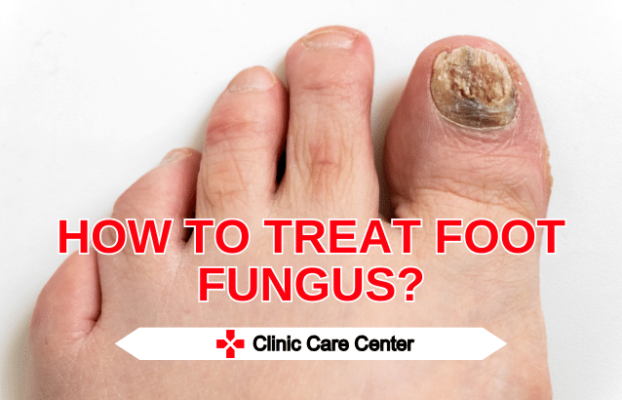Foot fungus is a common infection caused by a type of fungus called dermatophyte. It can affect the skin between the toes, the soles of the feet, and the toenails. Athlete’s foot is the most common type of foot fungus.
What are the Symptoms of Athlete’s Foot?
The most common symptoms of athlete’s foot are:
- Itchy skin: This is often the first sign of athlete’s foot and can be very intense.
- Scaly, peeling, or cracked skin: This usually occurs between the toes, but it can also affect other areas of the foot.
- Burning or stinging: This may feel like a pins-and-needles sensation.
- Blisters: These can occur anywhere on the foot, but they are most common between the toes.
- Redness and inflammation: This is usually most noticeable between the toes, but it can also affect other areas of the foot.
In some cases, athlete’s foot can also cause the toenails to thicken, discolor, and become brittle.
What Causes Foot Fungus?
Here are some of the most common risk factors for foot fungus:
- Sweating excessively: Sweat creates a warm, moist environment that is ideal for fungal growth.
- Wearing tight-fitting shoes or socks: Tight footwear can trap moisture and heat, which can also create a favorable environment for fungi to grow.
- Walking barefoot in public places: Walking barefoot in public places, such as locker rooms and swimming pools, can increase your risk of exposure to dermatophytes.
- Sharing shoes or socks with someone who has foot fungus: Wearing shoes or socks that have been worn by someone with foot fungus can spread the infection.
- Having a weakened immune system: People with weakened immune systems, such as those with diabetes or HIV/AIDS, are more likely to develop foot fungus.
Other factors that can increase your risk of foot fungus include:
- Age: Foot fungus is more common in adults than in children.
- Gender: Men are more likely to develop foot fungus than women.
- Occupation: People who work in wet or humid environments are more likely to get foot fungus.
- Athletic activity: Athletes are more likely to get foot fungus because they often sweat a lot and wear tight-fitting shoes.
How to Treat Athlete’s Foot?
here are a number of ways to treat athlete’s foot, depending on the severity of the infection.
- Over-the-counter antifungal creams and ointments: These products are typically effective for mild cases of athlete’s foot. They contain ingredients such as clotrimazole, miconazole, or terbinafine, which kill the fungus and relieve the symptoms.
- Prescription-strength antifungal medications: If over-the-counter treatments are not effective, or if the infection is severe, your doctor may prescribe a stronger antifungal medication. This may include oral antifungal pills or topical antifungal creams or ointments.
- Home remedies: There are a number of home remedies that may help to relieve the symptoms of athlete’s foot. These include:
- Soaking your feet in warm water mixed with Epsom salt or vinegar.
- Applying a mixture of baking soda and water to the affected area.
- Wearing socks made from breathable materials, such as cotton.
- Keeping your feet clean and dry.
What are the Types of Foot Fungus?
There are two main types of foot fungus:
- Athlete’s foot (tinea pedis) is the most common type of foot fungus. It is caused by a group of fungi called dermatophytes. Athlete’s foot can affect the skin between the toes, the soles of the feet, and the toenails.
- Onychomycosis is a fungal infection of the toenails. It is caused by dermatophytes, yeasts, or molds. Onychomycosis can cause the toenails to thicken, discolor, and become brittle.
Other types of foot fungus include:
- Moccasin foot is a type of athlete’s foot that affects the soles of the feet and the sides of the heels. It can cause the skin to become thick and dry, and it may crack or peel.
- Interdigital tinea pedis is a type of athlete’s foot that affects the skin between the toes. It can cause the skin to become red, itchy, and scaly.
- Vesicular tinea pedis is a type of athlete’s foot that causes blisters to form on the feet. The blisters may break open and ooze fluid.
- Ulcerative tinea pedis is a severe type of athlete’s foot that can cause open sores to develop on the feet. This type of infection is more common in people with diabetes or other medical conditions that weaken the immune system.

